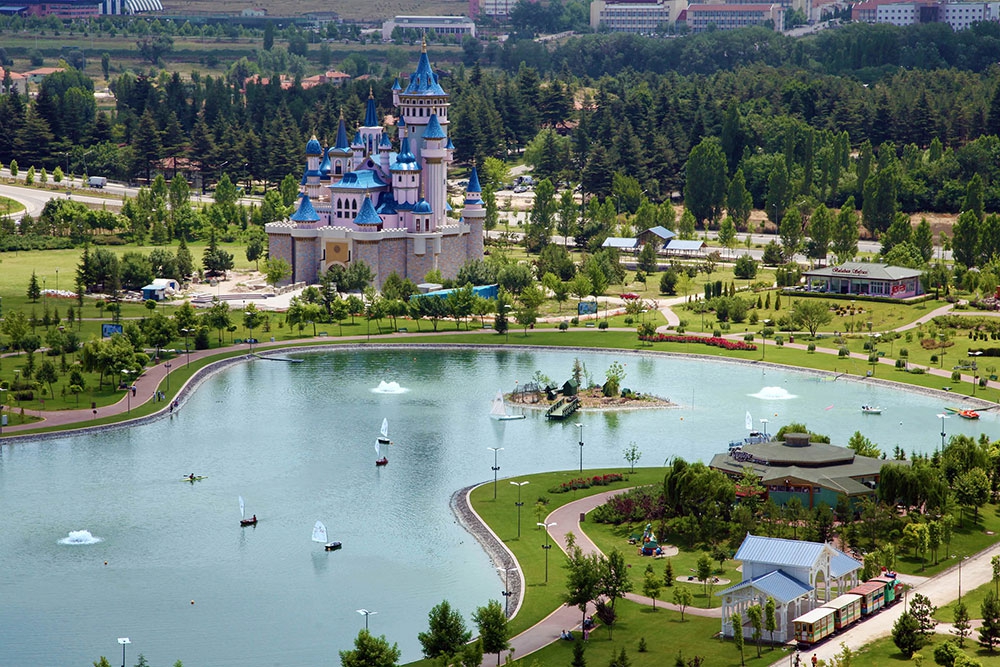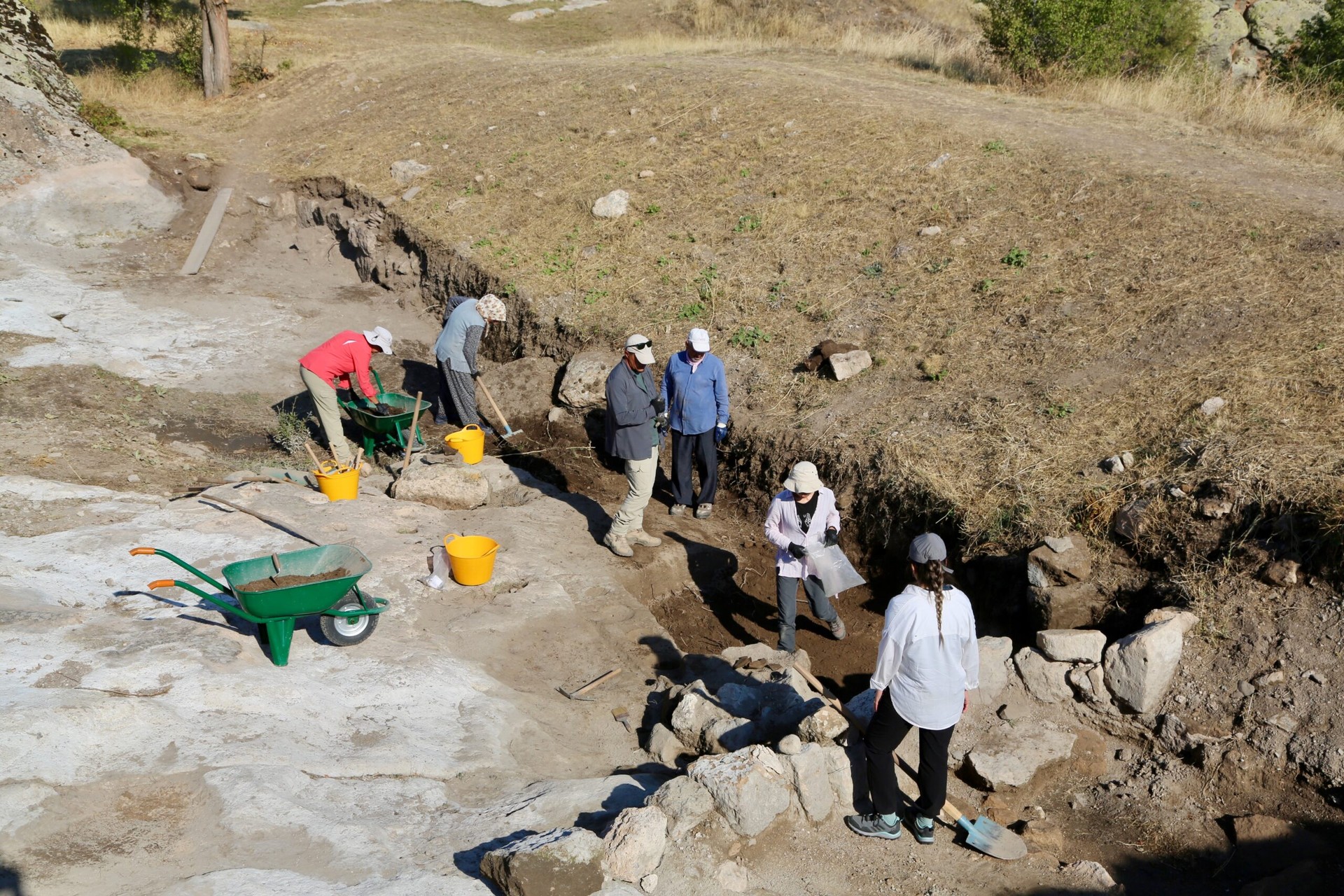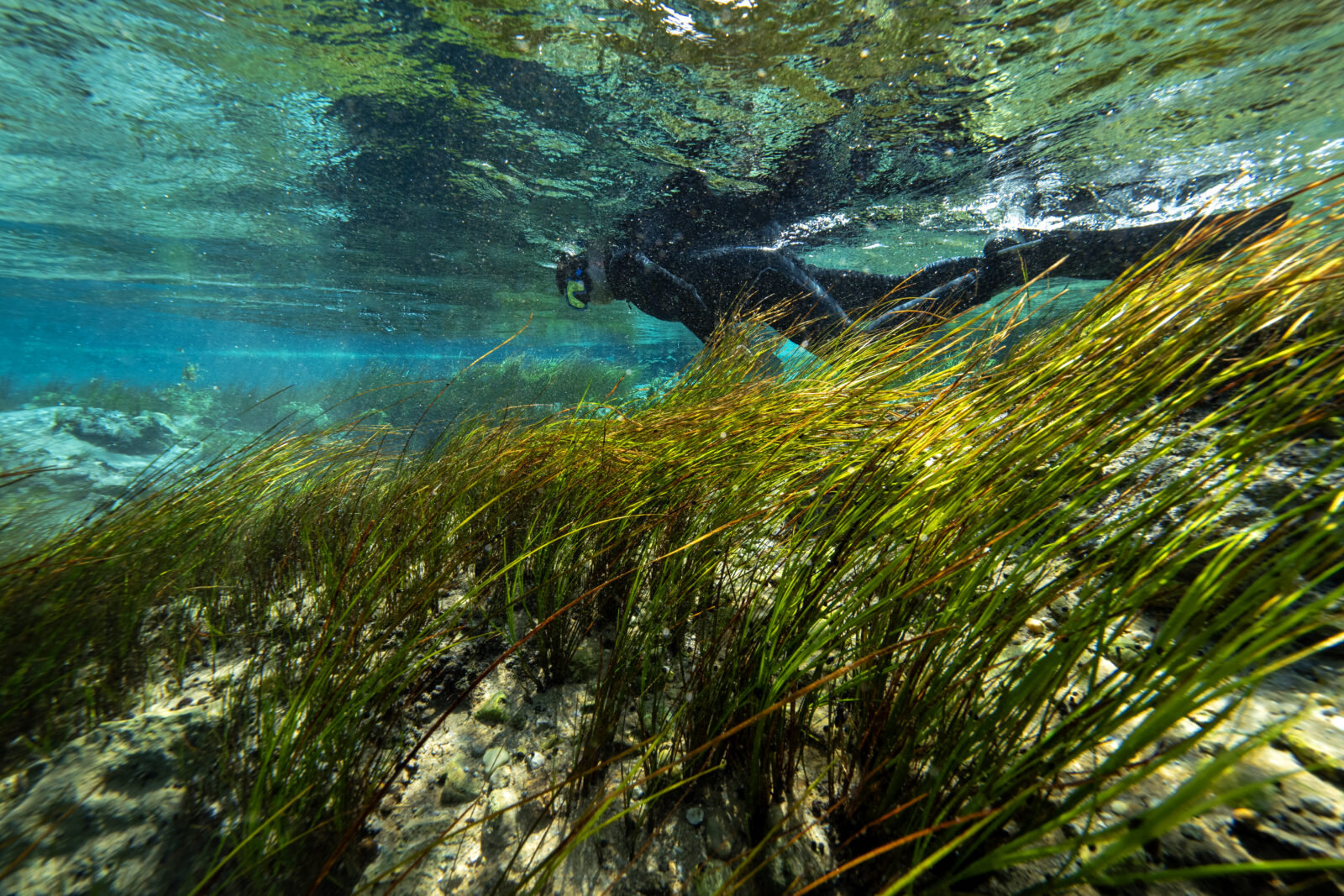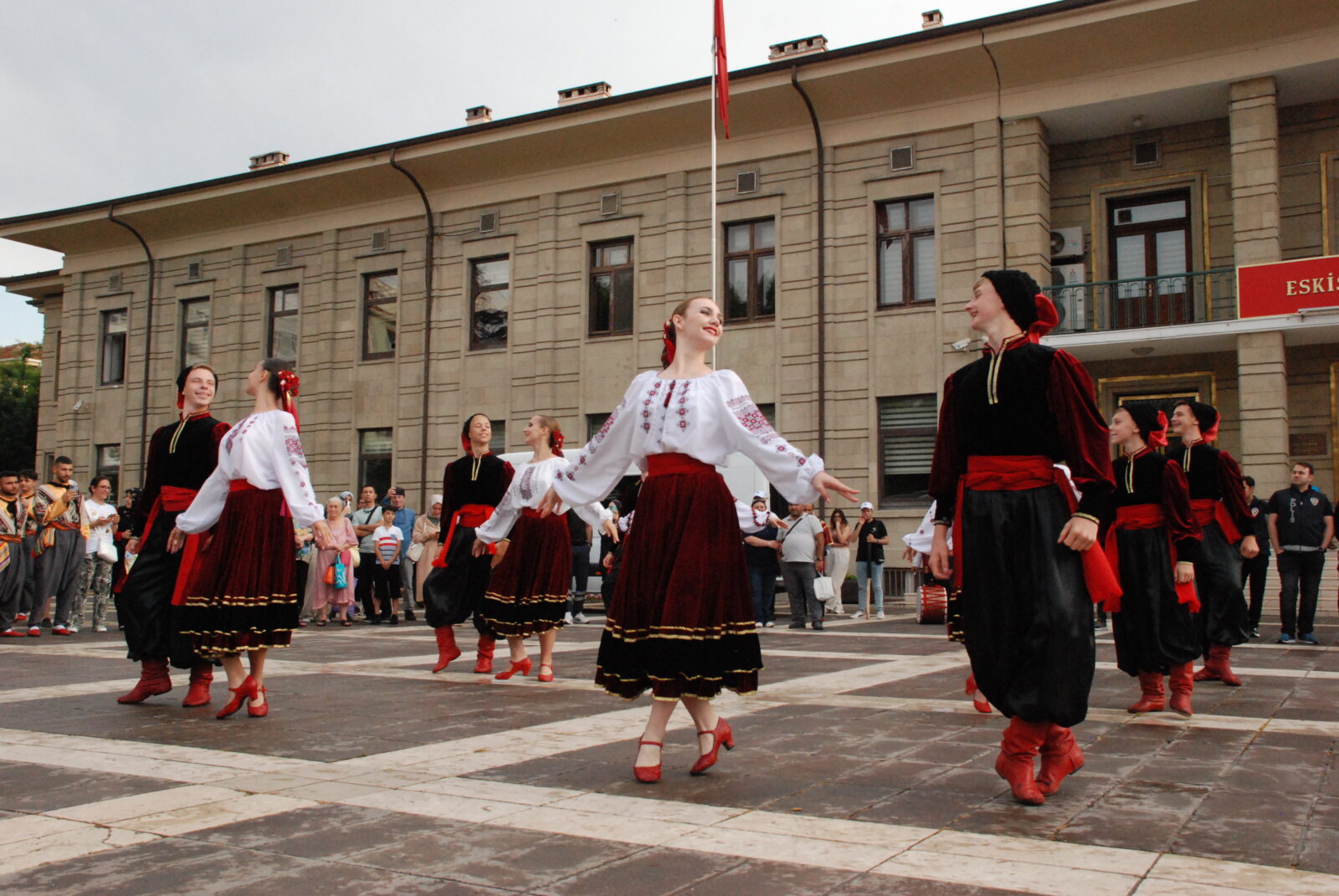
A three hour high-speed train from Istanbul brings you to Eskisehir, an inland town located on the banks of thePorsuk River where romantics glide along canals in gondolas modelled on their more famous Venetian cousins.
Its history dates back to the Hittites. Over the centuries dozens of other civilizations and empires reigned here too, including the Phrygian, Seljuk, Byzantine and Ottomans. The old town centre is packed with history, modern art, delectable cuisines and stunning Instagram opportunities around every corner.
The streets of Odunpazari Mahallesi, the former wood market area, are lined with colorful traditional wooden houses embellished with detailed carvings and cumba, bay windows. In the past local women would sit in them and spy unseen on the streets below. Many have been converted into cafes and small boutiques, but Odunpazari Modern Muze, OMM, should be your first stop.
Designed by Japanese architects Kengo Kuma and Associates and built from wood, OMM pays homage to Ottoman history as well as Odunpazari, with a Japanese twist. Enormous wooden beams stacked with geometric precision allow for the play of light and air while a huge woven bamboo installation reminiscent of an elephant’s trunk, is truly mesmerizing.
2025 is the museum’s 5th anniversary. To celebrate, local and international artists, sculptors, designers and other creatives have brought nature back into everyday urban life in The Creatures of Comfort, a contemporary, fantastic and fun exhibition that runs until late July.

The 16th century 'Kursunlu Kulliyesi' religious complex attributed to Acem Ali, chief architect to the sultans known for creating works in classical Ottoman style, is set among leafy green trees. It contains a former Mevlevi dervish lodge, a harem, an imaret, that’s a soup kitchen, two tombs and a caravanserai. The name comes from the kursun, the lead lining the dome of the mosque.
The mosque is still in use while the rest of the complex has been repurposed. It’s famous for the Eskisehir Luletasi Muzesi, the Meerschaum Museum, with around 400 works on display by 60 different artists. White meerschaum, beyaz luletasi in Turkish, is a soft easy-to-carve white stone found only in Eskisehir and nowhere else in the world.
It’s most often used to create Meerschaum pipes, famous for their extraordinarily decorative tobacco bowls complete with soldiers in battle, boats at sea and other historical scenes carved into the stone. Nonetheless non-smokers will swoon at elaborate Meerschaum busts, cane handles and other objet d’art.
Under the arches of a former caravanserai, gnarled tree trunks and driftwood become faces and birds in flight in the Ahsap Eserler Muzesi, the Museum of Wood Working.
During the Turkish War of Independence (1919-1923) when the country fought to free itself from Allied rule, Eskisehir was occupied by British forces. Kurtulus Muzesi, the Museum of Republican History, provides a fascinating look at this period through hundreds of photos, paintings and clever political cartoons commenting on the Allied occupation, as well as the Greek and Ottoman governments of the time.
There are also interactive games to play, models of Turkish WWI warships and over 50 portraits of Mustafa Kemal Ataturk, founder of the Turkish Republic. There’s even a wax statue of the man himself.
Other sites of note are Cagdas Cam Sanatlari Muzesi, the Museum of Contemporary Glass Arts, and a wax sculpture museum founded by Yilmaz Buyukersen, former city mayor and himself a sculptor. ETI Arkeoloji Muzesi, the Eti Archaeological Museum, offers a prehistory deep dive with artefacts from scientific excavations carried out in the region, including a selection of Phrygian pieces.

Food lovers are well served in Eskisehir, literally. The local cuisine has influences from the Kafkas, Balkan and Crimean regions as a result of migration after the Crimean War of 1860. Two favorites are Balaban kofte and ciborek. Balaban means ‘great’ in the Tatar language and these large meatballs paired with grilled peppers and tomatoes served atop pita bread with a side of yoghurt are extremely filling. Ciborek, thin deep fried crinkly pastries filled with ground beef, onion and vegetables make for a great snack or even a full meal. It’s up to you.
Modern gourmands are catered for with reworkings of traditional dishes such as manti (small dumplings) stuffed with lentils rather than meat, and wedding rice dishes in restaurants ranging from family friendly spaces to upmarket Turkish dining establishments.
Enjoy a leisurely Turkish kahvalti, a breakfast that’s more like brunch, at one of the pretty cafes along the banks of the river.

For an edible souvenir, pick up a box of Met helvasi. Met was once a popular game where people would use long sticks to hit smaller ones as far as they could. The losers had to make helva, a mix of flour, oil and lemon. This involved six to eight people repeatedly stretching, folding and re-stretching the helva until it was ready to eat.
As well Meerschaum pipes there’s a beautiful range of ebru silk scarves in Kursunlu Kulliyesi, while Atlihan El Sanat Carsisi, the two storey Atlihan Handicrafts Center, is packed with shops selling artisanal glassware, unusual ceramics, paper jewellery and more.
Most sites are in walking distance and there is also an easy-to-use tram system. Take a taxi to Kent Park for walks, cafes, horse-riding facilities plus other attractions including swimming pools and two beaches, made from real sea sand. Also of note are the Eskisehir Havacilik Muzesi, the Eskisehir Aviation Museum, and Eskisehir Sazova Park, a Disneyland inspired park.